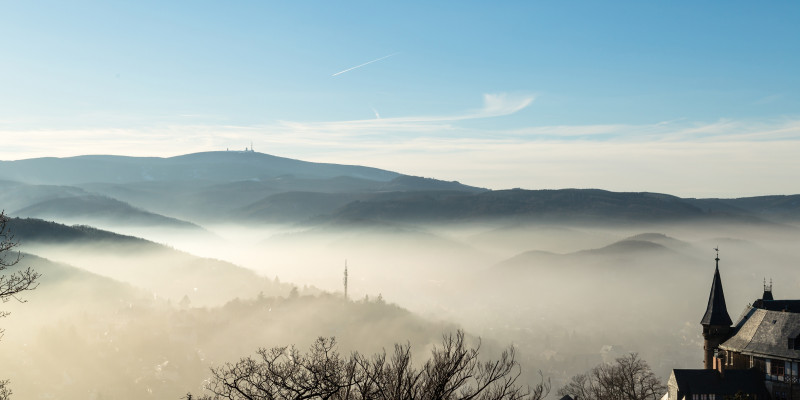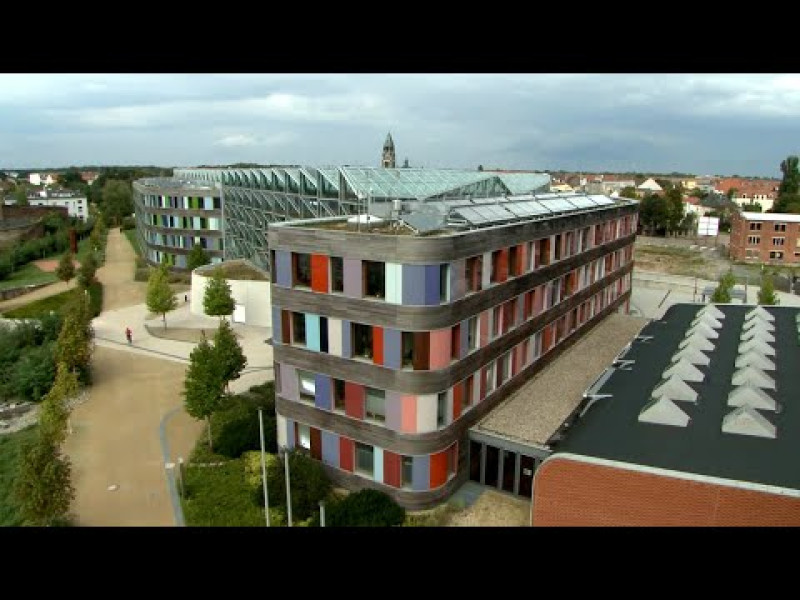Air quality was often very poor in former East Germany (GDR) at the turn of the century, due mainly to lignite-fired power stations and, in winter, coal-fired heating systems. In the 1980s, extremely high concentrations of sulphur dioxide were measured, especially in the industrial area around Leipzig/Halle/Weißenfels/Bitterfeld. With values of over 400 micrograms per cubic metre (μg/m³) on an annual average, pollution here was about four times higher than in the West German Ruhr area. By way of comparison, the highest values today are around 10 µg/m³. It was only when power stations and industrial plants were shut down or rehabilitated at the beginning of the 1990s that sulphur dioxide and particulate matter pollution in the territory of the GDR fell drastically. It was not until around the year 2000 that the concentrations in eastern and western German industrial areas ceased to differ. Today, however, nitrogen dioxide and particulate matter pollution in particular remains a problem in German metropolitan areas.
When the first all-German water quality map was to be drawn up in 1990, an additional quality class was introduced to describe the water quality of many East German rivers: "ecologically destroyed". Before 1990, East German rivers were among the most heavily polluted watercourses in Europe - foam mountains at dams and rivers coloured by chemicals were the rule rather than the exception.
After reunification, obsolete industrial plants on former GDR territory were shut down or rehabilitated, modern and more efficient sewage treatment plants were built and environmental legislation was improved. As a result, the water quality of many rivers has visibly and measurably improved. For example, pollution with heavy metals such as mercury and persistent organic chemicals has fallen by more than 95 percent in many major eastern German rivers since the early 1990s. Dirk Messner said, "The ecosystems in the Elbe recovered very quickly after 1990. However, despite the positive developments in recent years, only seven percent of Germany's watercourses currently achieve the good ecological status that the EU Water Framework Directive aims to achieve by 2027. Not a single river has good chemical status. There is a still a lot to be done."
Thirty years ago, climate protection was not an issue that was as important to politicians and the public as it is today. Electricity and heat in both East and West were largely generated using coal and oil. Accordingly, carbon dioxide emissions from the combustion of fossil fuels accounted for over 80 percent of greenhouse gas emissions in both East and West. Emissions data between 1970 and 1989 show little change except for economic and weather effects. This changed abruptly with German reunification: the collapse of the economy and the optimisation of power plants and industrial facilities resulted in a significant reduction in emissions in the new Länder from 1990 onwards. Carbon dioxide emissions alone fell by almost half in the eastern part of the country between 1989 and 1994. The situation was quite different in the territory of the old Länder, where emissions initially remained unchanged. The main reasons for the lower emissions in the new Länder were that less lignite was burnt in the power stations and that heating systems were quickly modernised.
Dirk Messner said, "The total emissions of reunited Germany have fallen by more than 35 percent since 1990. The energy sector in particular has been successful, even though the economy has grown considerably, especially after reunification. But the challenges remain great. Germany and Europe want to become climate neutral by 2050."
The German Environment Agency is dedicating its current edition of "What Matters" to the reunification jubilee. It is available for download here (German).
Take a multimedia stroll through the important dates in politics and environmental history of recent decades here (German).
 Click to enlarge
Click to enlarge
